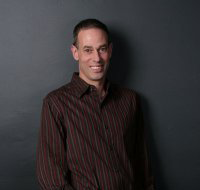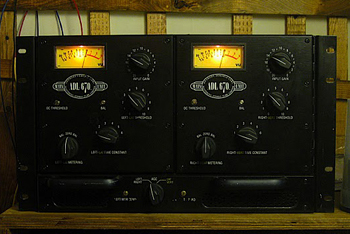Made in New York: Anthony DeMaria Labs
NEW PALTZ, NY: Anthony DeMaria never intended to create an audio company. “In a way, it created me,” says the one-time wiz-kid turned entrepreneur.
Like many makers of boutique audio electronics, DeMaria had little formal training to start, but found himself attracted to sound, organization, and work that demanded fine manual dexterity.
“Although I didn’t have a lot of background with circuits, my father was a model-maker, and I think that influence made me comfortable working with my hands,” says DeMaria. “My first schematic was the [Teletronix] LA-2A, and I quickly found that I could turn out prototypes pretty immediately.”
From there, DeMaria would go on to streamline and expand his one-man operation, before teaming up with PreSonus to bring high-fidelity tube preamps to the masses, and then ultimately throw his chips back into the boutique world to develop a faithful recreation of the breathtakingly over-engineered, 20-tube, 14-transformer behemoth known at the Fairchild 670.
Over the decades, his sense of excitement, awe and graciousness has barely receded: “It’s just so cool that I can have a thought in my head, put it into metal, and someone will come along and say ‘what do I owe you?’ All money aside, it’s so great that out of a whole world [of gear makers] out there, they call me.”
If you ask DeMaria and his clients, it’s that eagerness to pick up the phone and interact with his customers that kept ADL selling high-end niche merchandise throughout dire economic times. ADL 670 owner and Brooklyn-based producer/engineer Joel Hamilton reminisces that “Anthony said it best when I first started to talk to him about getting a 670: ‘I’m not selling boxes, I’m cultivating relationships with engineers and users of this stuff’. That was years ago, and he’s stayed so true to that very high standard all the way.”
Back in 1987, DeMaria’s initial, successful stab at the LA-2A evolved into a product called the ADL 1000.
Although it’s been eclipsed in the press by his newer, more sensational pieces, DeMaria’s version of this classic opto circuit is what built his company, and it remains an essential backbone of his product line.
And, over 25 years DeMaria has labored to see that circuit maintain its integrity: “If I were to re-interpret one little thing, I’d have to explain why, and lose a certain crowd.”
There are challenges: “Whether you’re doing 10 or 100 you have to go though the entire parts list, make sure all the vendors still have those parts available. There are so many parts that go into any product, and if you go into production without checking that every part is still made, you’re playing Russian roulette. You could have to change your entire design if you can’t find or make a suitable replacement.”
The hardest thing, DeMaria says, are the transformers: “The sonic footprint of any good piece of tube gear is, hands down, the transformer. You have to nail that first – if you screw it up, you’ve got nothing.”
Some of the most critical elements are built in-house. “Often, the original transformers we try to duplicate are very old and there’s no documentation. You measure everything, but at the end of the day, you’re throwing a dart. You create the transformer, stick it into the original design and say ‘Okay, what’s it doing? Should we go up, down, left or right?’
“It could take a month or two and 4 or 5 versions, or it could be 8 months and 12 versions. You don’t really know until you try.”
All this experience re-engineering vintage circuits and maintaining standards in his own creations prepared DeMaria for his biggest challenge yet: if the ADL 1000 was DeMaria’s original flagship, the ADL 670 has usurped that title through sheer ballsiness and heft. With a 6RU mainframe and 4RU power supply that weigh in at a combined 84lbs, the ADL 670 is a heavy load on the back, and the wallet. This elegant giant lists at $19,000 MSRP. And it sells.
670 user and Strange Weather Studio engineer Daniel James Schlett says, “It can be subtle at times, but what it is doing cannot be done with any other units I’ve used in the past.”
“The 670 is pretty fantastic on a lot of things,” says Schlett. “It’s not a ‘blow up your room mics box’, but it does a fantastic job of imparting great character on a vocal or bass track while staying extremely hi-fi. It can give a singer that extra sparkle that was missing in the chain, or help pull out a performance no one in the room was ready for.”
“It’s also in constant use on the mix buss – here is where the 670 has a way of standing out and blending in all at the same time.”
Studio G‘s Hamilton agrees that the unit excels on the stereo buss, a function that’s driven the value of the original Fairchild through the roof: “I’ve used the ADL 670 on almost every single record I’ve mixed since I got it years ago. I could probably just normal it to the main mix insert point on my Neve, and save the trouble of patching it at all.”
An impressive box for sure, but is it worth over $9,000 MSRP per channel? It’s one of those unanswerable, subjective questions. Value, as always, depends on the user’s resources, needs and desires. But this much is clear: DeMaria’s 670 delivers the tone of the original, at a lower price than a vintage unit, with a new warranty and uncommon customer service.
Hamilton’s own story about his interaction with DeMaria, for example, is far from unique: “I was in the middle of doing the new Pretty Lights record, and we were printing live to two-track tape with the ADL 670 on the mix. I was running everything hot, and had the power supply in a ‘less than optimal’ position. My power supply fried. I said “Wait… Does anyone smell that? Something burning?’ And someone replied ‘smells like your wallet’.”
“Anthony drove down from his shop that morning (on a Sunday!) with a calibrated bench unit for me to continue tracking. Besides the fact that I like Anthony personally, that he goes out of his way to really make things work is just incredible and dear to my heart. Try getting that type of service from a random manufacturer. You’d need a time machine and cab fare from White Plains to make that happen with an original Fairchild 670.”
But what about the sound? The ADL has routinely passed discerning user’s tests, coming up as nearly indistinguishable from the original. To this engineer’s ears, mixes seem to take on new weight, depth, and girth when the 670 is laid over the mix buss. It’s an effect that is at once powerful, satisfying and refined. As soon as the inserts are engaged, whole productions sound as if they’ve pumped out 100 push-ups and chased them down with a couple of grass-fed cheeseburgers.
Of course, not all of DeMaria’s designs are so pie-in-the-sky. In 2006, a collaboration with PreSonus brought high-end tube audio down to earth for thousands of pro and semi-pro studios across the world.
“Economy of scale made that product possible,” says DeMaria of their creation: the ADL 600. “It’s the only way we could bring the product in at that magical $2,000 price-point. A connector that costs me a buck, might cost them a penny.”
Unlike many of his other best-selling designs, the 600 is a novel creation that takes a more indirect inspiration from vintage circuits. “We looked at tube preamps that The Beatles used, but in the end some of them had too much character. When you want to capture it pristine – this is the piece. We decided the best thing to do in a preamp like that is to give people the most open sounding pre with the most amount of gain.
“And it’s just got an enormous amount of gain,” he notes. “You’ll never outrun it. It’s a really nice-sounding preamp.”
We asked DeMaria if he learned anything from that mass-market collaboration which has been useful at his own boutique operation, where he hand-assembles units in New Paltz, NY. “They really understood simplicity and clarity of layouts, and have a great ability to maximize the ease of manufacturing. There’s this old adage, ‘Go slow now, go fast later’. Those guys really know it.”
He’s even applied some of those concepts to his own designs, adapting the mono ADL 1000 and stereo ADL 1500 circuits to work in the same chassis, using interchangeable platform boards that allow quick fixes in-the-field. “Now, instead of a client sending me the unit, I can send a replacement board overnight in a soft-pack. I just helped a client install a power supply board over the phone in 4 minutes and helped save the session! How happy was he?”
DeMaria says that it now takes less technical aptitude to build his earlier designs, saving more time for QC and answering phones. On the flip-side, there’s an increased part count, but allowing these two units to share some elements has helped control prices and enhance uniformity across the line.
Having mastered point-for-point recreations of classic gear and super-clean mass market creations alike, DeMaria has is ears set on new horizons: “I’d love to create another branch-out company. I’ll always continue to make the traditional ADL pieces, but I also want to create products that go the other way – less expensive. Gear that disrupts the sound. I’ve already created a box to make the most pristine sound. Now I want to go in the opposite direction. It seems like musicians are shifting away from capturing pristine sounds and moving toward effecting it.
“I want to be on the ground,” he says,” See what’s going on, visit some of these studios. I’ve always been talking to musicians and studio owners. That’s where the ideas come from. So much has changed in recording, and the question becomes – how do you reconnect the dots?”
And staying in New York is a big part of that plan, according to DeMaria, who was born in Brooklyn and toys with the idea of opening an office in the borough. He tried a move to California for a while, but couldn’t “sink his teeth” into LA.
“I couldn’t see myself anywhere else,” he tells us. “I mean, where are you gonna get the best food? In Brooklyn! C’mon!”
Justin Colletti is a Brooklyn-based audio engineer and music producer who’s worked with Hotels, DeLeon, Soundpool, Team Genius and Monocle, as well as clients such as Nintendo, JDub, Blue Note Records, and the Metropolitan Museum of Art. Visit him at http://www.justincolletti.com.










